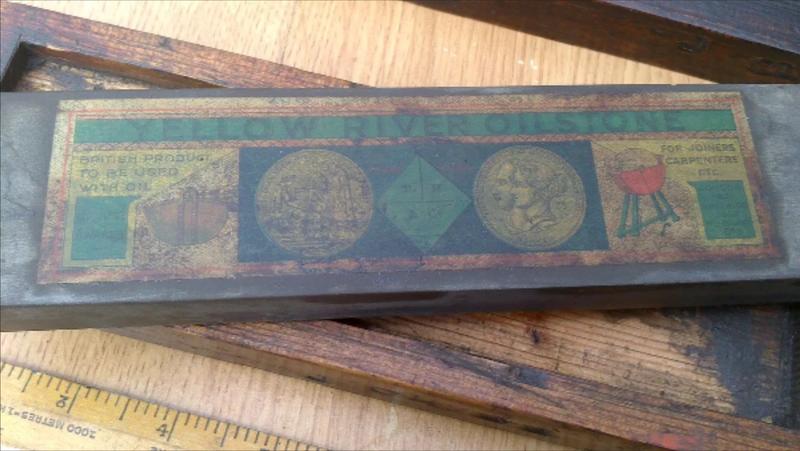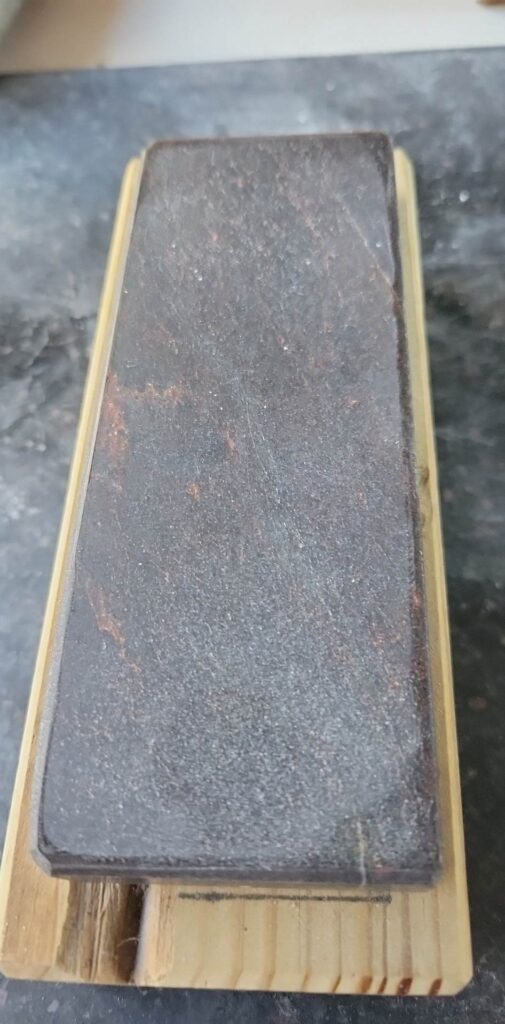American natural stones used as hones and sharpening stones are some of the most coveted stones around the world – this reputation largely in-part thanks to the Arkansas and Washita breeds of stone. There are other interesting American whetstones though such as the Ohio Bluestone and Indiana Hindostan Siltstone. When comparing American natural stones with European and Japanese origin stones, it can be much more difficult to cover the American stones in-depth. This can be traced to a few primary reasons, the first being that the Americas market had much less time to mature before the advent and proliferation of synthetic whetstones. The second reason being the perceived superiority of the Arkansas / Washita stones in both functionality and ease of excavation. Between their initial mining and the advent of the first really successful synthetic whetstone, Arkansas stones eclipsed every stone on the market except Japanese stones for the purposes of polishing. This means that the exploitation and use of things like the Ohio Bluestone, Hindostan Siltstone and Vermont Slate were far more limited as demand for them was very low. The last reason was probably the growing global trade networks of the world, where German/British/Belgium stones were far more available in an international sense than they ever were before. Many of the regional stones in places like UK, Scotland, and Japan were just that – regional. The US had less need for these regional stones and as such, we have much less information, mining efforts, and use of them throughout history.
Sections
Arkansas / Washita Stones
Hindostan / Orange Stone (Indiana)
Queer Creek / Ohio Bluestone (Ohio)
Deerlick Oil Stones / Deerlick Water Hones (Ohio)
Magog Oilstones/ Canadian Oilstones / Yellow River Oilstones
Vermont Slate
Apache Stones
Further Information
Arkansas / Washita Stones
Information regarding Arkansas / Washita whetstones has been expanded into its own page. Check here for more information on these stones.
Hindostan / Orange Stone (Indiana)
Information regarding Hindostan whetstones has been expanded into its own page. Check here for more information on these stones.
Queer Creek / Ohio Bluestone (Ohio)
Information regarding Queer Creek / Ohio Bluestone whetstones has been moved into its own page. Check here for more information on these stones.
Deerlick Oilstones / Deerlick Water Hones (Ohio)
Information regarding Deerlick Oilstones / Deerlick Water Hones has been moved into its own page. Check here for more information on these stones.
Vermont Slate
These Slate stones were first exploited by the Pike Manufacturing Co. that originally pulled material out of Pike, New Hampshire. Supposedly these Slate perform very similarly to the Schist that was originally excavated from that area. These are still mined today (primarily for architecture work) but as hones and you can find them for sale at a reasonable price. They are finishing stones which are known to be a bit slow but manageable, capable of knives but usually razor work due to being rather hard.
Magog Oilstones / Canada Oilstones / Yellow River Oilstones
Many of the stones sold as Canada Oilstones or Canadian Oilstones are actually Hindostan stones from Indiana due to the original confusion of hte Hindostan name in the British market. Usually this can be identified by the stratification lines on the side (and sometimes on the sharpening surface) which almost all Hindostan stones have.
Canadian Oilstones which are light in color, non-silty, lack the defined stratification lines, and are rather fast cutting but still act similar to a Hindostan are likely an actual Canada Oilstone called a Magog Oilstone which came were mined from 1820-1850 on the island at Lake Memphremagog. These Magog stones are actually Novaculite and functionally different than the siltstone (which is why they will not have the stratification lines on the side) and will be far similar in look and feel to a Washita Oilstone. Magog stones were also sold under the label Yellow River Oilstones which are very rare to find.
Apache Stones
This stone comes from the Southwestern United States. It is not mined but instead found above ground in natural formations. This is a type of Jasper stone which is very hard as much Jasper is. It is said the crystalline structure is better formed for the purpose of a whetstone, but for many it seems to have the same pros and cons of normal Jade/Jasper/Agate whetstones. As with most whetstones of this category, many do not find it particularly pleasurable to use – lacking consistency – nor lending itself well to the honings/sharpening process.
New Hampshire
Two types of Schist Whetstones came out of this area, one from Lisbon which was known as the chocolate hone (a blue/brown color) and the other from Pike which was a very fine-grained hone. It is hard to find more information on them.
Michigan
Supposedly a Novaculite called Carp River came out of Michigan that was said to be in the same range as Arkansas stones. I’ve never personally seen one and very little information exists on it.

